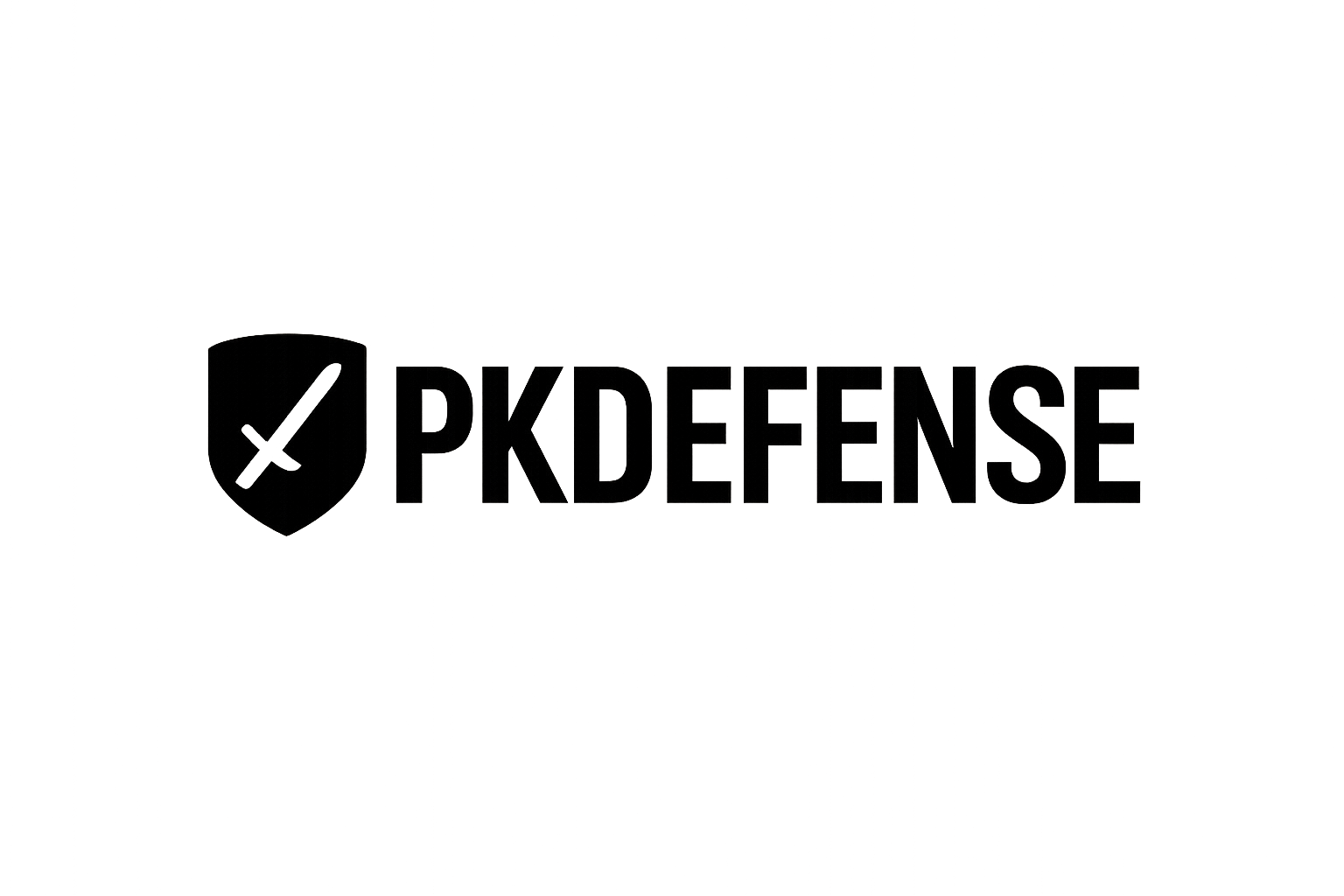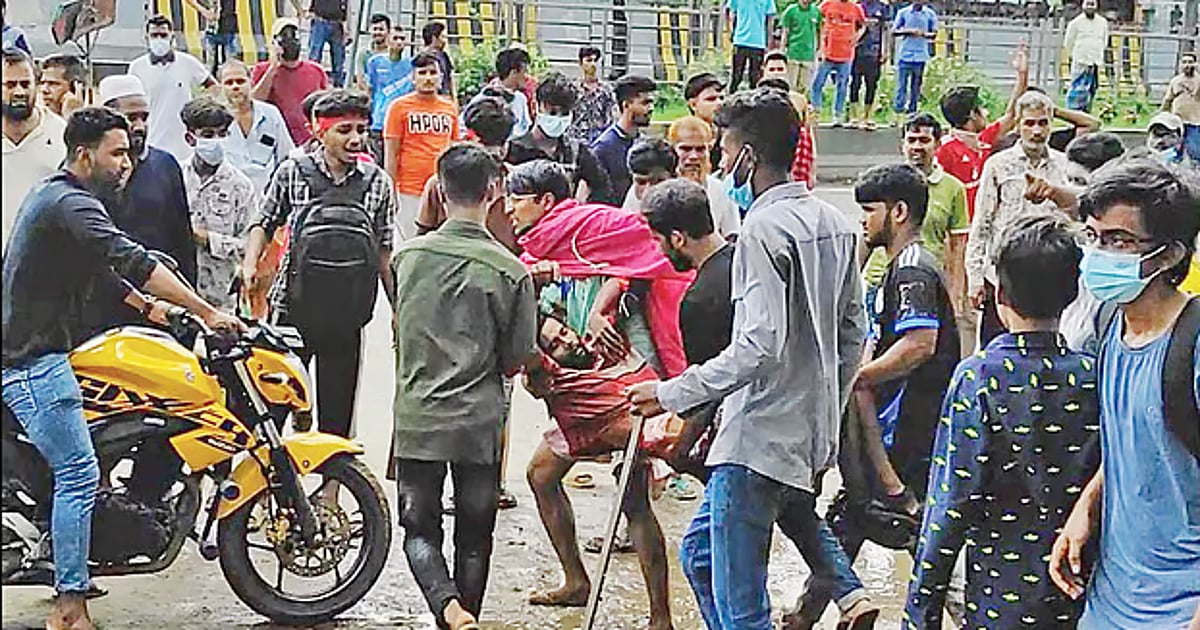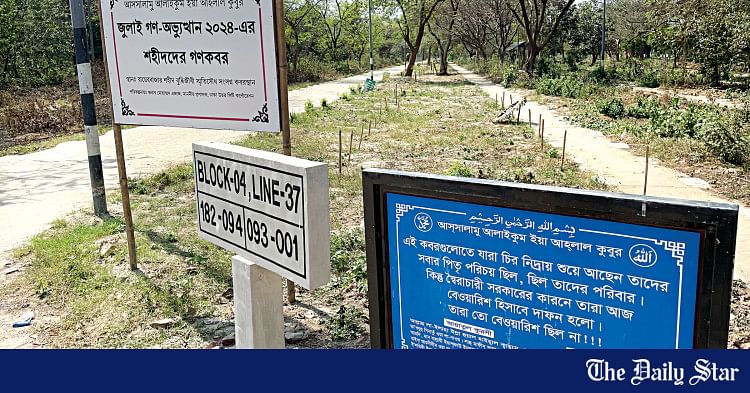15 killed in 6 hrs even after Hasina’s departure
Md Abdullah Al Hossain
Dhaka
Updated: 06 Feb 2025, 10: 59
People carrying a man hit by bullet in front of the Lab Zone in Savar File photo
5 August 2024. When the helicopter carrying former prime minister Sheikh Hasina, who was fleeing to India in the face of the mass uprising of the students and people, was crossing the border at around 2.30 pm, a massacre was unfolding in Savar near Dhaka with intermittent fire from the police. There were ambushes in at least four places.
At least 15 people were killed there in just six hours after Sheikh Hasina fled the country. As many as 10 of them were students. The remaining of the deceased were day labourers and low income people. Besides, some 33 persons sustained severe bullet wounds in these incidents. This came up in a Prothom Alo investigation.
The protesting students and people came face to face with the policemen in front of the police station right before the evening. The police were equipped with lethal weapons while the students and people only had brickbats and sticks. All of sudden, the police started firing indiscriminately in the narrow lane filled with people and students.
The police opened fire even at the end of the day as they were fleeing from their stations. When the entire country was celebrating the fall of the government, it was an evening of terror for the residents of Savar.
During two months of investigation, Prothom Alo collected and analysed footage of at least 400 videos of these incidents and compiled them to make a documentary titled Savar Massacre: In the Six Hours After Hasina Fled.
Non-stop firing on the highway
The agitated students and people brought out a procession from the Jahangirnagar University campus with various slogans against Awami League. This procession was heading towards Ganabhaban. Around 11:00, the procession started gaining momentum as students from Ashulia Bypail joined.
Meanwhile, the police had taken a strong position in the Savar bus stand area since morning to prevent any procession from entering Dhaka. Local Awami League, Jubo League and Chhatra League leaders and activists with firearms were along with the police there. There had been intermittent fire in the lanes and the highways since the morning that day.
At around 11: 30 am, madrasah student Md Hasibur Rahman, 17, was shot. About an hour later another student Md Sazzad was shot. They both succumbed to their injuries later.
Meanwhile the procession brought out from the Jahangirnagar University to two and a half hours to reach the Savar bus stand area. The situation turned tense there. In the meantime, the news that the army chief would address the nation at 2:00 pm spread throughout the procession. As soon as the procession tried to move forward to Dhaka upon hearing the news, it was met with heavy police resistance, with tear gas and pellets being fired.
However, the protesters did not back off. To prevent them from moving ahead, the police were firing with lethal weapons. The protesters started to run away to save their lives. There are a number of videos of people carrying numerous injured persons who were hit by the bullets.
Eyewitness Md Mostafizur Rahmam said he saw three persons falling right beside him after being shot. Speaking to Prothom Alo, he said, “He was shot and fell in front of me. It made a hole in the side of his neck. Right next to him someone suddenly fell to the ground. The bullet probably got him in the chest or abdomen. Another fell to the right of him.”
Another teenager named Muzahid Mallik was shot dead. Auto-rickshaw driver Sujan Mia was shot right after. Sujan was shot on his chest and waist.
The highway became vacant following that. Although a large portion of the protesters returned after hearing the news of Sheikh Hasina’s departure from the country, a part of the protesters were scattered around in front of the New Market. Al-Amin was shot there.
At around 2:40 pm, the police backed off a little from the Savar bus stand and took position at the Pakeeza U-loop on the western side of the road. They were accompanied by the local Awami League leaders and activists there.
Nafisa Hossain was shot dead in front of the Pakeeza Model Mosque. A bullet hit the left of her chest and came out at the back, to the right.
At around 2:53 pm, police entered the Thana road from the Dhaka-Aricha highway. But they were still firing towards the highway. At that time, 10th grader Alif Ahmed Siyam, who was hiding behind the road divider, was shot.
Speaking to Prothom Alo, Tania Ahmed, Alif Ahmed Siyam’s mother, said, “When he raised his head to look over the divider, the bullet hit him in the right eye and came out at the back. He fell to the ground immediately.”
Massacre in front of the police station
A portion of the protesting students moved towards Dhaka to celebrate the fall of the government. The other portion stayed put in Savar to create a resistance against police firing and moved forward to the Savar police station. They were chanting slogans that – ‘Sheikh Hasina has fled, Sheikh Hasina has run away.”
Later, at around 3:50 pm the police and protester came face to face at intersection near the Savar police station. The police force moved inside the police station at around 4:30 pm and locked up the main gate from inside. They urged the students to calm down with a mike from inside. Meanwhile, students and locals thronged in front of the police station. The students and general people increase in number in front of the police station. After a while, the police fired tear-shells from the roof of the mosque inside the police station. Then they started lethal gunfire.
A local trader in front was shot 18-19 times in his left hands and 20-22 times on right hands with pellets within seconds.
Speaking to Prothom Alo on condition of anonymity, he said, “I fell down immediately. I crawled past at least 5 shops. The skin and flesh on the knees were scraped off. Then I lost consciousness.”
A man in a red t-shirt was seen lying along the boundary wall of a hospital opposite to the police station. His identity could not be confirmed.
Schoolboy Safwan Akhter was shot dead at the intersection area. A bullet smashed his right hand and another hit on the right side of his chest. The 15-year-old was shot dead at the spot while demonstrating.
Worker Al Amin was shot dead there too. The bullet pierced through the left side of his chest and came out the back at the right. And auto-rickshaw driver Md Rafique was shot in between his chest and abdomen. He too died on the spot.
By that time, the intersection area became vacant. The students and people started thronging the Muktir Mor at around 5:15 pm. After the last round of firing, the crowds had grown.
The situation escalated at the Muktir Mor (an intersection) within a minute with the slogan – “direction action, Savar people into action! Direct action!”
People scattered around Muktir Mor and different other places started moving towards the Chowrasta (another intersection). More than 100 people thronged there and the area turned into a battlefield. Police “fired bullets like rain”.
Video footage of the incident shows protesters fleeing as the police started firing. Numerous gunshots could be hard in the last 15 seconds of the video. People were seen trying to save the lives of people who have been shot. A number of bodies had been lying on the road for a long time.
Bus driver Manik Hossain was lying right in front of the police after being shot by them. He lost consciousness five minutes after being shot.
The police continued the firing for at least half an hour. Speaking to Prothom Alo, student Nazmul Hossain shared the terrible experience that he went through that day.
“As I was running I felt something hit my foot like a 1000-volt-shock. I saw my big toe was hanging loose, shaking. A bone was sticking out of my heel. It was all white,” he recalled.
Prothom Alo has information of four people being shot dead there. They are – Nishan Khan, Tanjir Khan Munna, Abdul Ahad Shaikat and Md Mithu.
Student Mithu was shot in his chest. He died at the Muktir Mor on the way to the hospital. Another student named Tanjir Khan died of excessive bleeding after being shot in his thigh.
Nishan Khan had a wound on the back side of his head. He died at the hospital.
Ambush one after another
Firing was still on in the New Market area when a team of police took stance in the Thana bus stand area after Sheikh Hasina’s departure. There was intermittent firing for 20 minutes. Two other students - Abdul Quayyum and Shrabon Gazi - were shot to death there by 2:45 pm.
Quayyum’s friend Al Amin said, “Suddenly I saw Quayyum falling to the ground in slow motion. I still didn’t realise Quayyum had been hit. He fell down and when we were lifting him, we saw blood trickling out from his side. The bullet hit him in the kidney damaging everything inside. I think the bullet came from across the road. It was shot from the roof.”
The witnesses suspect Quayyum was shot from the multi-storeyed City Centre on the other side of the road. Seeing suspicious movement of people in red clothes on the roof of the building, the agitated mob vandalised the building.
There was another incident of sneak attack in the Thana bus stand area at around 3:00 pm. Police fired bullets from the road while some other unidentified person opened fire from a building nearby. The agitated protesters attacked the local popular hospital suspecting that the gunshots were coming from that building.
Later, the people formed a procession to move forward. The procession faced another round of ambush as soon as it crossed the Enam Medical College. The aggrieved people then attacked a high-rise building nearby. They vandalised the ground floor but did not find anybody.
There was another round of ambush around 5:15 pm at the Muktir Mor. People raided the Zunaid Tower suspecting that the bullets were fired from that building. But they couldn’t find anybody.
Gunshots targeting upper body parts
The Prothom Alo investigation has identified 15 persons who have been shot to death in the Savar upazila from noon to evening on 5 August. As many as 13 of them were shot on the upper parts of their bodies. Four of them sustained lethal bullet wounds and one was shot on the neck. Nine of them were shot in between chest and waist and one died after being shot in the thigh.
Police opened fire while fleeing
After killing and injuring a number of people, the police were looking for ways to flee. Some members of the police fled through the river. Many of the police members put off their uniform to flee. It became easier as it was already evening by that time.
However, most of the police members came out through the Thana road in a convoy. They were still firing from the convoy.
At least 150 police members were marching in front of the police convoy followed by some motorcycles. The motorcycles were ahead of a convoy of 13 cars. There was a pick up van, an armoured car, ambulance, microbus, leguna (locally made public transport) and a truck in the convoy.
The locals claim there were local leaders and activists of the Awami League and its associate bodies. However, the claim couldn’t be verified. The police continued firing in the nearby lanes when the convoy was on the highway.
Relentless sounds of gunshots spread fear among the residents of Savar upazila. In the end, the police convoy moved towards the cantonment.
* This report appeared on the print and online versions of Prothom Alo and has been rewritten in English by Ashish Basu



 www.newagebd.net
www.newagebd.net








































